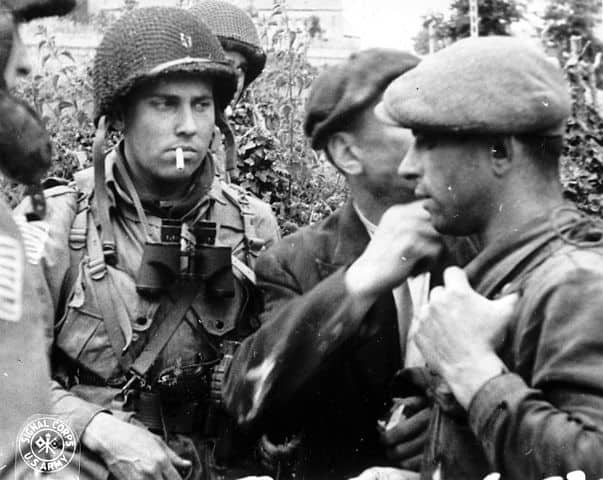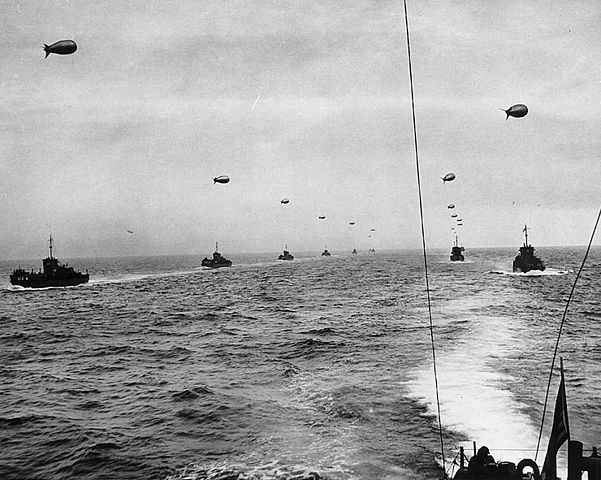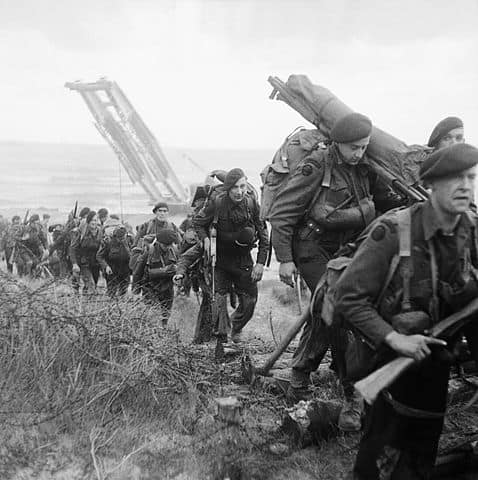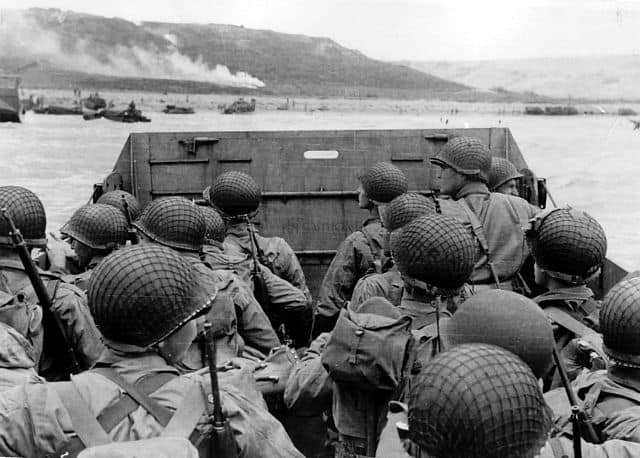Top 10 Facts about the Normandy Landings
The Normandy Landings was a huge turning point in World War II. It was a light at the end of the tunnel after four years of fighting across the globe.
If you want to learn more, keep reading for my top 10 facts about the Normandy Landings!
1. The Normandy Landings began on June 6, 1944
The United States officially entered WWII in December 1941, after the attack on Pearl Harbor. The strengthened Allied forces began planning for a massive invasion in France in an attempt to push Nazi German forces out of the Occupied zone of the country, which included the capital of Paris.
In the months leading up to the Normandy Landings, the Allies charged through northern Africa and southern Italy, in an attempt to get the Mediterranean back from the Axis powers. By September 1943, Italy had officially surrendered. Next up? A plan that would bring thousands of soldiers from England, across the channel, and into France.
2. The Normandy Landings are also known as D-Day
The Normandy Landings are perhaps better known as the D-Day landings. The ‘D’ stands for ‘Day,’ and the term had been generally used to refer to the first day of a major military operation. The Normandy Landings, D-Day – whatever you call it, it is definitely a major military operation!
3. The Normandy Landings were just the beginning of Operation Overlord
The Normandy Landings were just one part of a much larger plan dubbed Operation Overlord. The main goal of Operation Overlord was to open up a second front against Nazi Germany.
The Allies knew that in order to end the war in Europe, Germany needed to be defeated. At the time, the Soviet Union was busy fighting them off in the east, but as this was the only open front at the time the Soviet soldiers were under a lot of pressure. The Normandy Landings was step one in the Allies’ plan to open up a front in France.
4. General Dwight D. Eisenhower led Operation Overlord
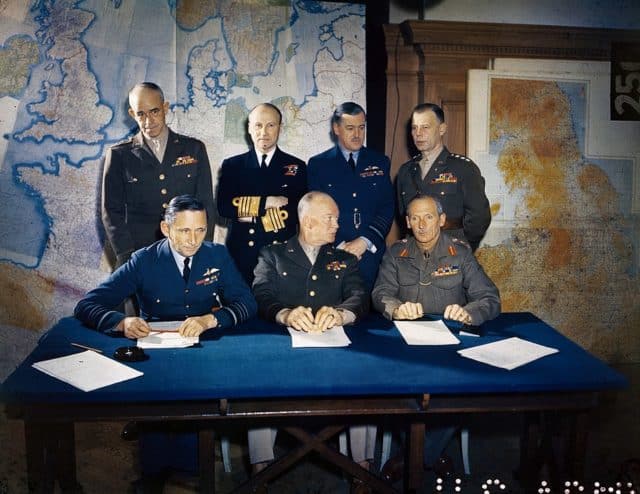
A meeting between Allied military leaders. General Dwight Eisenhower is seated in the middle in the front row – WikiCommons
Before Eisenhower was President of the United States, he was an important general for the U.S. Army. There was a lot of pressure on Eisenhower to get it right, and so he went to great lengths to ensure that everything went smoothly. He even went as far as consulting a meteorologist to make sure that the weather was ideal.
That said, the weather wasn’t perfect on June 6, but in the end, this worked to the advantage of the Allied soldiers. If the weather had been any better, the German troops would have likely spotted the incoming Allied ship much faster.
5. The Normandy Landings required an international effort
You hear a lot about the American troops that fought at the Normandy Landings, but the operation required an international effort. Allied soldiers from the U.K., Canada, Australia, Greece, Belgium, Poland, and other countries were all involved in the D-Day mission.
6. The Normandy Landings are to this day the largest land, naval, and air operation in history
When I say that the Normandy Landings began on June 6, I really mean it. Just after midnight, 18,000 Allied soldiers parachuted down into the beaches in front of the invasion area. The Allied airforces also flew more than 14,000 supporting defense soldiers over the course of the day.
The naval component of Operation Overlord was called Operation Neptune and featured almost 7,000 battleships, destroyers, minesweepers, and other assault ships. In total, over 132,000 soldiers were on the ground at the Normandy Landings. To this day, it remains the largest land, naval, and air operation in military history.
7. The Allied forces chose Normandy to surprise the German troops
The Normandy Landings required a large element of surprise in order to work. In 1943, the Allied forces created a massive “misinformation” campaign in order to confuse the Germans and lead them to the Pas de Calais. Pas de Calais is also in northern France and is actually closer to England than Normandy. The Germans expected the Allied soldiers to attempt to invade France by crossing the English Channel and landing in the Pas de Calais.
Little did they know, the Allies were up to something much bigger, over 200 miles away.
8. The Normandy Landings were the beginning of the end of WWII in Europe
The Normandy landings marked an end in sight to the bloody turmoil of the past few years. While the success of D-Day didn’t mean that the war was officially over, it was a step (or a jump) in the right direction. It would actually take months for the Allied troops to get what they wanted: full control over several small French towns that had been taken over by Nazi German soldiers.
Although it wasn’t an immediate end to WWII, after the Normandy beaches were won by the Allied forces, they were better equipped to head to Paris and liberate the city in August 1944.
9. It’s still unsure how many lost their lives on the Normandy beaches
So many gave up their lives in the name of their country on D-Day. In fact, when planning the attacks, the Allied military leaders anticipated a huge loss. But, it was a loss that the leaders, and ultimately the soldiers themselves, were willing to take. If the Normandy Landings were successful, there was a good chance that the Allied forces would win the war.
Historians estimate on June 6, over 4,400 Allied soldiers were lost, but they also agree that the number is most likely much higher. 1,000 German soldiers were injured or died.
10. There is a museum at the site of the Normandy Landings

The Normandy American Cemetery and Memorial, overlooking Omaha Beach by Peter K Burian – WikiCommons
If you’re interested in visiting the beaches where the Normandy Landings took place, you can do so for free. There is a massive American cemetery there called the Normandy American Cemetery and Memorial.
There is a visitor’s center and you are also free to roam the cemetery to pay your respects. If you go closer to the beach, you’ll see remnants of artillery in the dunes that overlook the water. I’ve been several times, and it is extremely moving each time. Thinking about the lives lost and bloodshed makes it easy to shed a tear of your own. While it’s a difficult trip, I definitely recommend it.
Conclusion
I hope that you found this brief lesson on the Normandy Landings informative and interesting! And, I hope that I’ve inspired you to take your own trip to Normandy to pay your respects one day.
And, if you’re in Paris, and want to learn more about the history of the French capital, check out our walking tour options here!
Planning a trip to Paris ? Get ready !
These are Amazon’s best-selling travel products that you may need for coming to Paris.
Bookstore
- The best travel book : Rick Steves – Paris 2023 – Learn more here
- Fodor’s Paris 2024 – Learn more here
Travel Gear
- Venture Pal Lightweight Backpack – Learn more here
- Samsonite Winfield 2 28″ Luggage – Learn more here
- Swig Savvy’s Stainless Steel Insulated Water Bottle – Learn more here
Check Amazon’s best-seller list for the most popular travel accessories. We sometimes read this list just to find out what new travel products people are buying.






